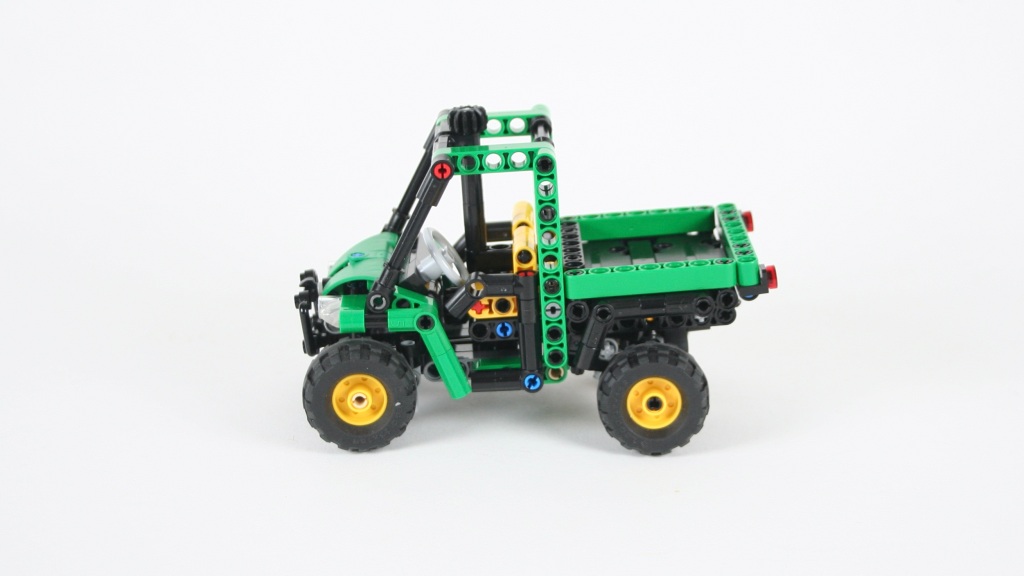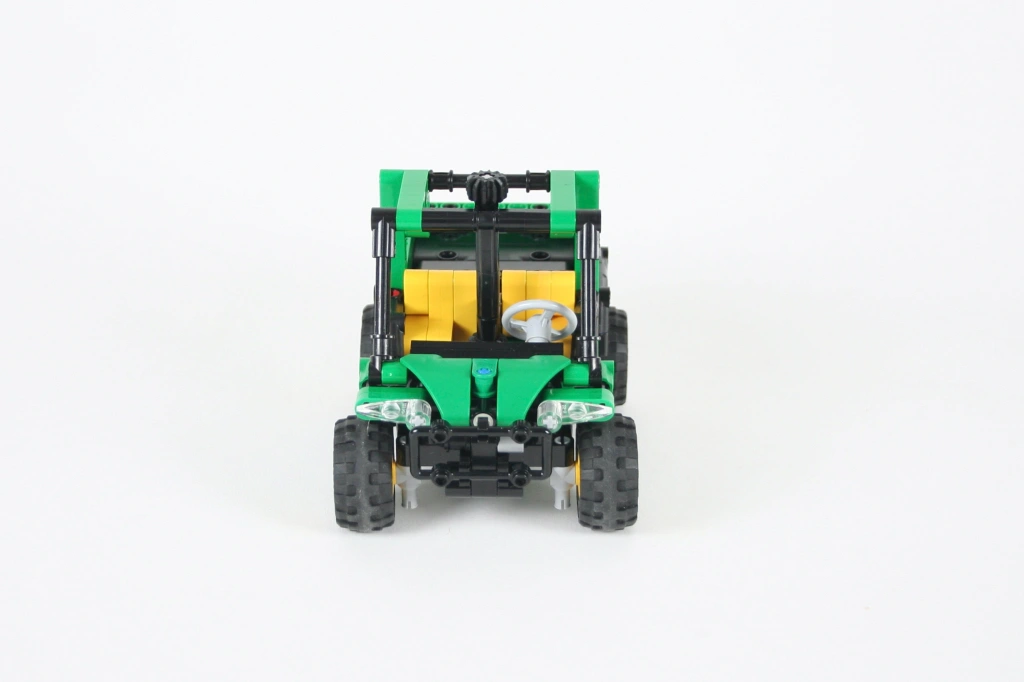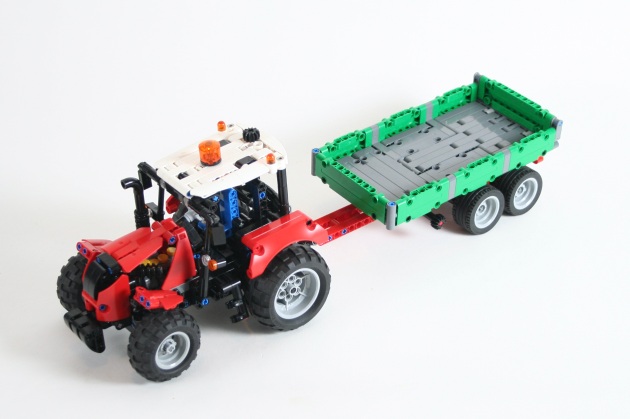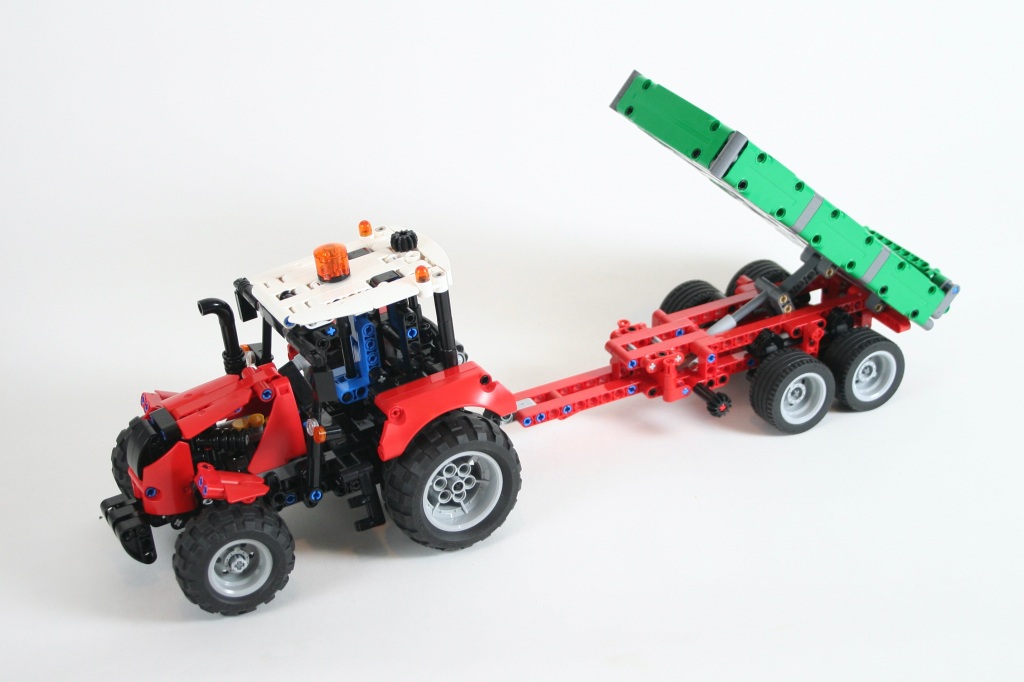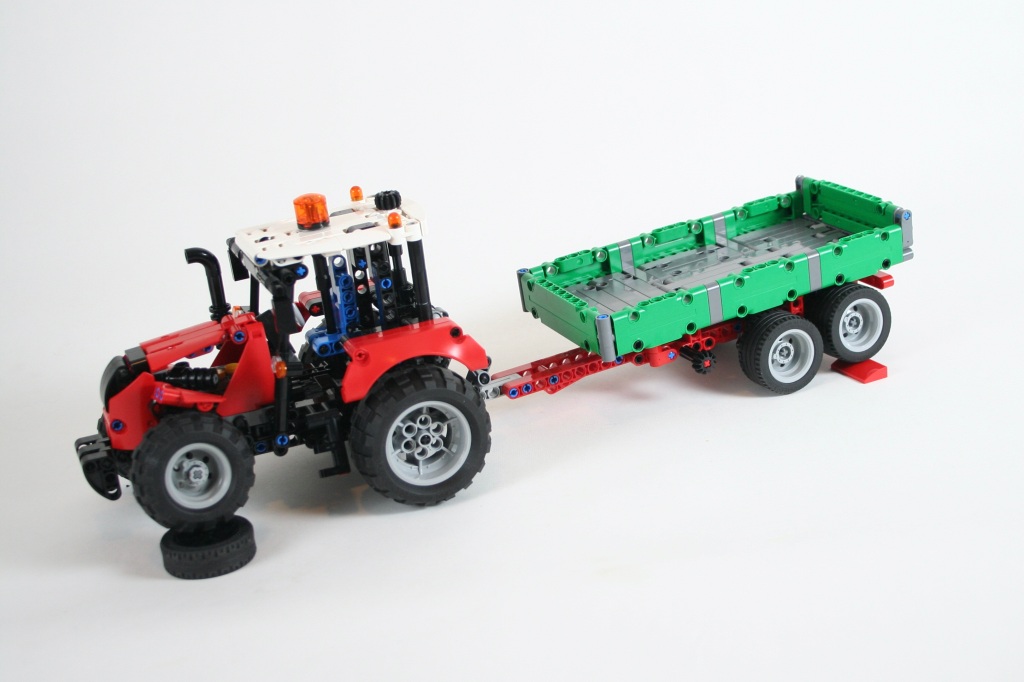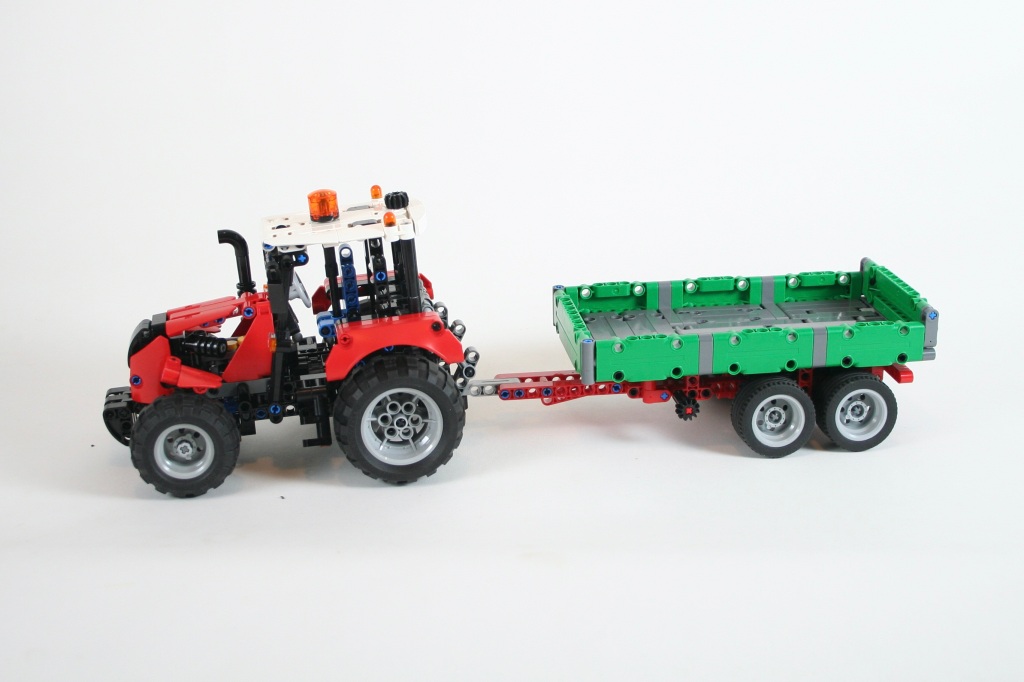John Deere Gator
February 20, 2024 Leave a comment
Another little helper for the Thirdwigg Farm.
Instructions may be found at rebrickable.com.
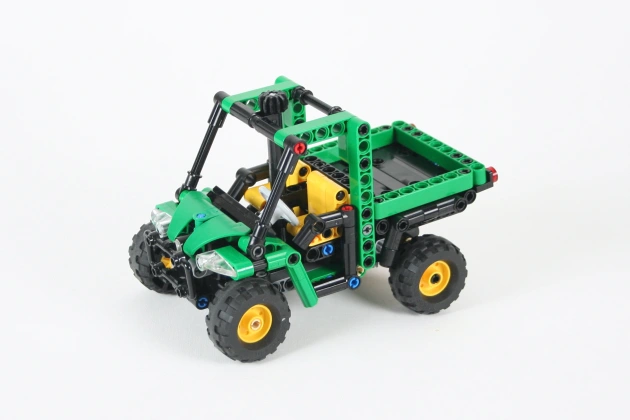
I get ideas from all over the place, and recently I saw a little John Deere Gator at a local park, and decided that was just what the Thirdwigg Farm needed running around and moving supplies. Plus, with each passing year, the addition of new green parts, makes additional John Deere builds possible.
As I alway do, I started determining the size tires needed for the scale. I settled on the 37mm balloon tires, but this presented a problem right away. These tires, need a 18mm hub, but this wheel does not come in yellow with an axle hole. After some tinkering, I found a little solution. I would use the yellow wheels with a pin hole, and mount the wheels on a Technic Pin with Bush Stop. Not only would the bush stop be able to connect to an axle and transmit power to a fake engine, the friction connection of the pin would allow for slight slippage between the axle and each wheel to function as a differential. Quickly I was then able to add in a little one cylinder engine, and a simple suspension on the rear axle.

The front was a little easier. A simple steering rack is design, covered by the hood and a little grill guard. The HOG is mounted on the top of the roll cage, and bisects the two front seats. I took some time to get the wheel fenders to look the way I wanted while still allowing for tire clearance as they turned, but I was able to make it work by using a half stud offset.
Finally, I added simple opening doors, and a tilting rear bed. Both are simple in their design, but allow for additional play features. I’m especially proud of using Part 85940 as a stop so the rear bed does not overtip.
Big MOCs get all the glory, but it’s the smaller ones that I like and I’m most proud of. Anyone can add suspension to a car that is 31 studs wide, but figuring out how to stuff suspension, a differential, and an engine in 20 cubic studs, its what keeps me building. This little MOC was a great project, and I am so happy with all the functions I was able to include. I hope you enjoyed it too.
Happy building.
